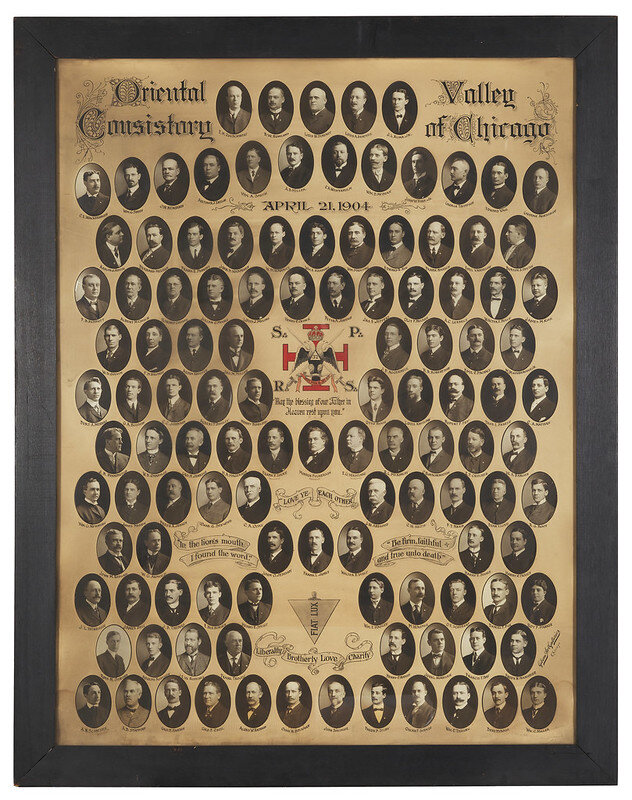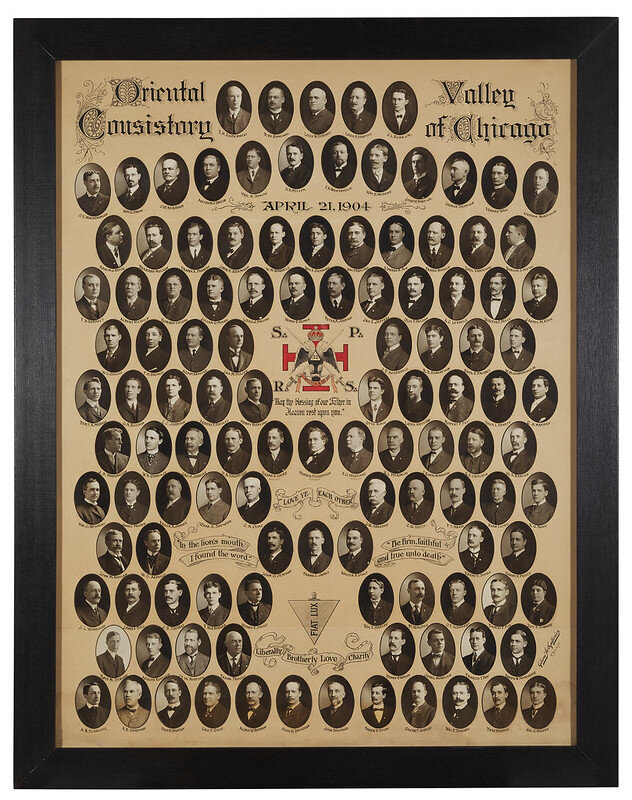Our conservators love to work on pieces that showcase our city’s extraordinary history. It was a treat for our Paper Department to work on a series of twentieth century membership photographs from the Chicago chapter of the Scottish Rite. The photographs were taken and developed by the Gibson, Sykes & Fowler studio, one of the Chicago’s earliest photography studios that opened as early as 1860.
Recto Before Treatment
Verso Before Treament
The photographs arrived in fair condition, considering their age of over 115 years. The photos were not faded and showed very little age-related discoloration. However, the treatment was challenging due to the oversized mount, which had many areas of loss and layers that were separating. Additionally, the sheer number of photographs in need of attention meant our conservators spent many hours bringing this piece back to its original vibrancy.
The Photographs Awaiting Cleaning in the Lab
The piece had severe surface soiling to the mount and each of the photographs. The mount is a very rigid board and was separating in several areas throughout from age related deterioration and at the lower edge from water damage. When the treatment began, our paper conservators surface cleaned the recto and verso of the mount with a combination of soot sponge, eraser crumbs and a vacuum to remove any of the loose surface dirt. After reducing the surface soiling, the mount appeared brighter. Next, each photograph was first dry surface cleaned with a soot sponge then cleaned with several damp swabs to reduce any remaining surface dirt.
The separating layers of the mount were repaired by inserting adhesive between the layers with a brush and a syringe. Using a syringe was necessary to reach further into the mount layers with the adhesive. Once the board layers were coated in the adhesive the area was weighted to help the layers re-adhere while the adhesive dried. The mount had also suffered several areas of loss along the edges on both the recto and the verso. The losses were filled using several layers of thin Japanese Kozo paper and paper pulp. Once the areas were repaired the new fills were toned with watercolors and color pencil to blend the area with the original mount.
During Treatment- Detail of Discoloration Before and Atfer Cleaning
The frame also required attention and repairs were needed to address the unstable structure and handling damage. After initial surface cleaning, the stabilization of the wood and joints needed to be addressed. First, the splits and breaks in the wood were repaired with conservation-grade adhesives and inpainted to emulate the surrounding surface. The miters were stabilized, and the bored holes were filled. Finally, a protective layer of microcrystalline wax was applied.
To protect these historical photographs from future damage, conservation framing techniques were chosen to reduce acidity and harm from UV light rays. These techniques include archival coroplast backing board, spacers, and UV Plexiglas glazing.
Recto After Treatment
Verso After Treatment









